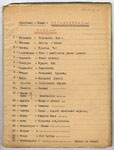|
|
|
LiteratureLooking for the first milestones in our literary experiences, we see The History of Emily Montague, a romantic novel written by Frances Brooke in 1764. Its importance lay in the descriptions of life in Quebec - largely habitant families and local Indians. Sisters Susanna Moodie and Catherine Parr Traill authored accounts of settlement in Upper Canada in the 1830s to 1840s. Lucy Maud Montgomery began her writing career in 1891, at the age of 16, in Prince Edward Island, ultimately producing nine novels featuring a young heroine known simply today as Anne of Green Gables. On the west coast, Pauline Johnson, born to an English mother and a Mohawk father, published Legends of Vancouver, based on Squamish Indian tales, in 1912. On Vancouver Island, in 1941, painter Emily Carr wrote Klee Wyck, short stories in a similar vein. Underlying each of these examples is a special bond the authors had with their natural surroundings. Quite a different emphasis emerges in French Canadian literature. More formal and philosophical is the writing of Philippe Aubert de Gaspé, Quebec's first novelist. His book L'influence d'un livre, published in 1837, is also solidly grounded in the society around him, but his outlook is urban, not frontier or rural. It took an outsider born in France, Louis Hémon, to "give an incomparably true and beautiful picture of the French Canadian peasant", in his 1914 work, Maria Chapdelaine*. It has been said that this small volume inspired Quebec's self image as a pastoral society, a view shaken by Gabrielle Roy's Bonheur d'occasion (English title, The Tin Flute) in 1945. Urban, class-conscious, unhappy and questioning, this book probably sparked much of the feeling shown in the Refus global, a manifesto written in 1948 by Paul-Émile Borduas. Endorsed by the Automatistes, a group of artists, it was a missive aimed at Quebec society, calling upon it to liberate itself from many of the traditional and authoritative chains that bound it. Novelists born in or outside Canada have been successful in highlighting national or regional issues within broader storylines. Hugh McLennan's Two Solitudes (1945) is an excellent example of an attempt to explain the rifts between the English and French populations. Mordecai Richler introduced a fascinating Jewish community deep in the midst of those two language groups with his novel The Apprenticeship of Duddy Kravitz (1959). Margaret Laurence comes close to perfectly portraying small-town Prairie life in both A Jest of God (1966) and The Diviners (1974). Fiinally, we see important authors reach either into the future and fantasy, as Margaret Atwood does in The Handmaid's Tale (1986), or the past, as do Guy Vanderhaeghe in The Englishman's Boy (1996) and Carol Shields in The Stone Diaries (1993), who relate regional historical episodes through the eyes of fictional characters. Immigrant writers have also set a trend; they are winning more and more of the nation's most prestigious literary awards. Michael Ondaatje's The English Patient (1992) and Anil's Ghost (2000) both won the Governor General's Award, as did A Song for Nettie Johnson, by Gloria Sawai, in 2002. |
Bibliography · Links · Credits · Index


